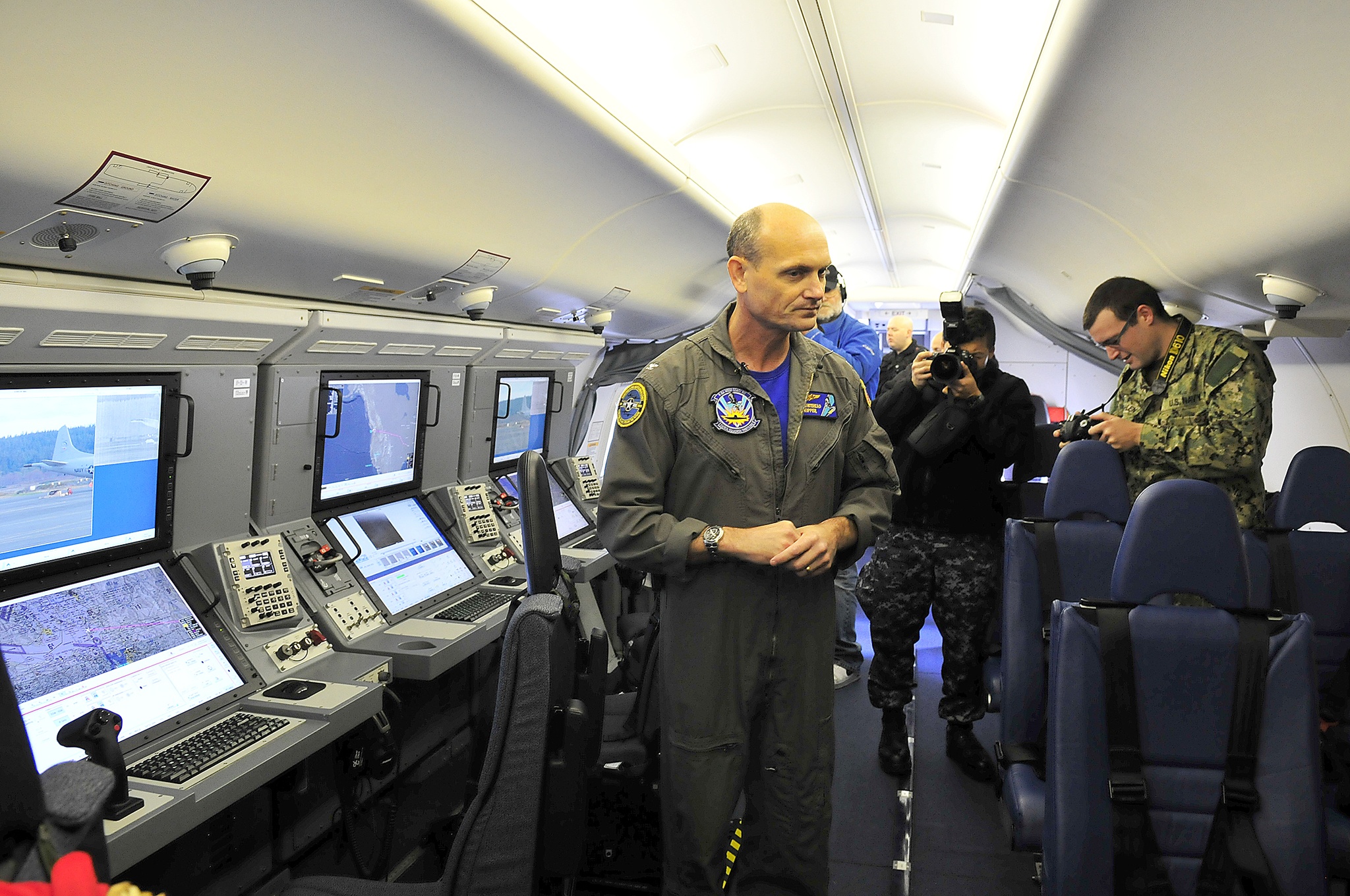Naval Air Station Whidbey Island Squadron VP-30 took delivery of the Navy’s newest P-8 Poseidon maritime patrol aircraft Friday.
Rear Adm. Kyle Cozad, Commander, Patrol and Reconnaissance Group, visited the base to meet with media to discuss the strategic importance of the Navy’s maritime patrol and reconnaissance modernization efforts. Cozad, along with other top officials, gave a detailed look at the high-tech aircraft.
A ribbon cutting ceremony was also held for the newest Fleet Training Center which will officially open Oct. 31.
The facility will provide networked simulators for pilots and aircrew to train with multiple other aircraft in different parts of the country. Each of the six P-8 squadrons will have their own dedicated simulator to conduct training. Previously, four squadrons shared the aging P-3 Orion aircraft simulator. The synthetic networked based simulation training will allow for joint or fleet level exercises which will increase training proficiency at a fraction of traditional operational costs, according to Navy officals.
Capt. Brett Meitus, Commander Patrol and Reconnaissance Wing Ten, said construction on base has been a boom. Approximately $200 million dollars was spent on hangar renovation to accommodate the new aircraft.
Meitus said it would have cost double to build new hangars so the decision was made to renovate instead. Along with the hangars, a new mobile tactical operations center, or MTOC, was also built to provide command and control of the aircraft.
Meitus said that, during the transition, there will be an initial surge of nearly 800 personnel, but that will eventually balance out to an increase of only 100 personnel and their families being added to the base. As an example, Meitus said VQ-1 has a staff of nearly 540 personnel and that mission will be replaced with the MQ-4C Triton. The unmanned aerial vehicle will physically operate from NAS Point Magu in Calif. but will be controlled out of one of the new facilities at NAS Whidbey.
Meitus acknowledged that finding housing is more difficult than it used to be.
Capt. Andy Miller said it was amazing to see a base that was once on the chopping block 20 years ago during the base realignment and closure, or BRAC, to what it has become now.
“We are a vibrant presence in the Pacific Northwest,” said Miller. “The base is now bigger and more important than ever to the Navy’s mission.”



